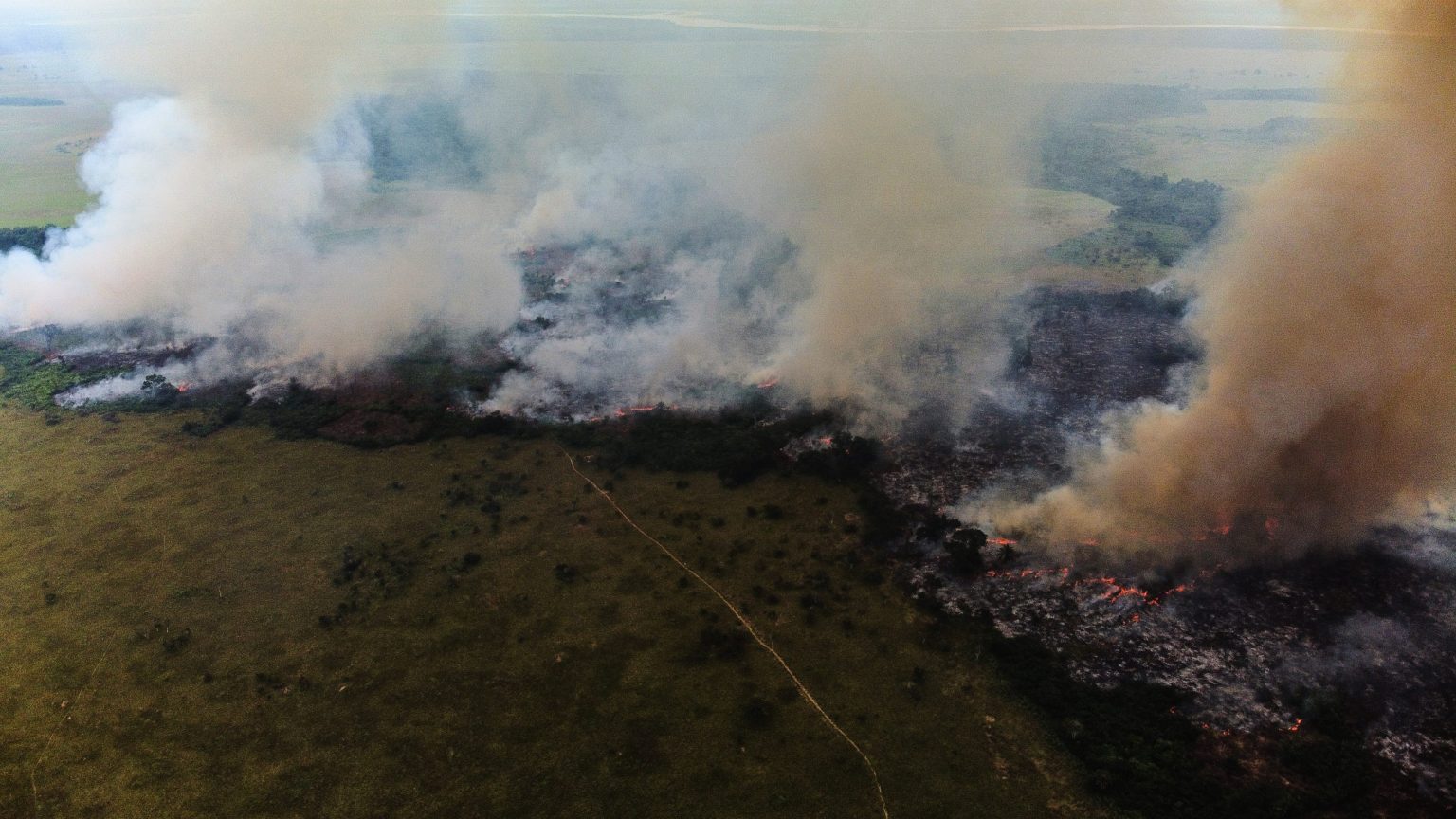Deforestation continues unabated ahead of COP26
This article is part of EURACTIV's special report Forestry at COP26.
An average of 2,400 trees is cut down every minute, leading to an area the size of Belgium being deforested each year, according to the Latin America regional director for the Forest Stewardship Council (FSC), who was speaking ahead of the COP26 climate summit.
“It is considered that between 15 million and 18 million hectares of forests, an area the size of Belgium, is destroyed every year,” said Pina Gervassi, the regional director in Latin America for FSC, a certification body aiming to help reduce deforestation.
Such statistics are causing growing concern as the world goes into the United Nation’s annual climate summit. Forests play an essential role in combatting climate change and ensuring that global warming is limited before it causes drastic, irreversible changes to the planet.
The world’s forests are a key carbon sink, absorbing planet-heating CO2 from the atmosphere as they grow. They are also vital homes for biodiversity.
But forests are coming under pressure from agriculture and increasing cases of wildfires and damage caused by pests that are exacerbated by climate change.
It’s a double-whammy: when a forest goes up in flames, not only is the carbon it contains immediately released, its CO2-absorption capacity also disappears.
“Of course, deforestation is a key contributor to climate change. In that sense, land use change, especially in the form of deforestation, is the second-largest source of atmospheric carbon dioxide emissions after fossil fuel combustion,” Gervassi said.
According to the Global Tree Assessment, which compiled research on tree species from the past five years, the main threats to trees are forest clearance and habitat loss, direct exploitation for timber and other products, and the spread of invasive pests and diseases.
The report compiled the extinction risk of 58,497 tree species around the world. It found that 30% of these species are threatened with extinction and at least 142 are recorded as extinct.
“Despite the many efforts taken by countries to safeguard and sustainably manage them, forests continue to be under threat. Every year, seven million hectares of natural forests are converted to other land uses such as large-scale commercial agriculture and other economic activities,” according to a UN report on forestry.
“Although the global rate of deforestation has slowed over the past decade, we continue to lose forests in the tropics – largely due to human and natural causes,” the report said.
Forestry at COP26
The protection of forests will be on the agenda at the COP26 climate summit, where world nations are expected to come forward with more ambitious climate goals.
Many of these pledges will be “net” targets, meaning they rely on things like forests to remove a certain amount of carbon from the atmosphere.
The UK government, which is leading the summit, has included forestry as one of the key issues for discussion. That includes a focus on imported deforestation – trees being felled because of pressure from Global North supply chains.
These pressures have led to huge sections of rainforests being destroyed – areas that are rich in biodiversity and able to capture large amounts of carbon. The EU alone was responsible for 16% of deforestation related to international trade, second only to China, according to WWF, the conservation group.
“The most concentrated deforestation rates are located in tropical rainforests … they are very important for Indigenous Peoples, from an ecological point of view, for biodiversity conservation, for the provision of water, food and other services to people and society in general,” Gervassi said.
However, any attempt to tackle imported deforestation at COP26 is more likely to be a first step rather than a full-blown initiative. This is partly because China has been unsure of whether to join such an agreement, EURACTIV understands.
Meanwhile, forestry could play a role in COP26 negotiations around the so-called ‘Article 6’ negotiations related to international carbon markets.
Europe’s position on Article 6 is to avoid double counting where emissions are counted twice. This can happen if the host nation selling the carbon credit to another country or company fails to make the corresponding adjustment to its own emissions tally.
According to climate scientist Jean-Pascal van Ypersele, any reward system for carbon removals coming from forestry needs to come “in addition to” the natural flux of CO2 removal that has been going on for centuries.
“What’s clear to me as a climate scientist is that you cannot count carbon storage two times,” he explained, referring to carbon stored in forest, soils and other ecosystems.
The European Union is planning to put forward a legislative proposal to prevent imported deforestation within the EU shortly after the UN summit.
